Signs and Symptoms of Vitamin D Deficiency

Vitamin D is a fat-soluble vitamin that is naturally occurring in some foods. Your skin also produces vitamin D when you are in the sun. It is essential facilitator of many bodily functions. Vitamin D's most important role is to keep your bones healthy by increasing your body’s ability to absorb calcium.
When your body doesn’t get an adequate amount of vitamin D, your bones might become thin and brittle, making you more susceptible to fractures. Vitamin D also plays a role in preventing and possibly treating diabetes, high blood pressure, some types of cancer, and multiple sclerosis.
Signs of Low Vitamin D
The most common sign of vitamin D deficiency is muscle weakness and bone pain. Some other symptoms of low vitamin D levels include:
Weakness
Mood swings
Fatigue
Vitamin D deficiency can cause osteoporosis, which causes bones to fracture easily. In children, it can cause rickets, a condition that causes the bones to become soft and bend.
Severe vitamin D deficiency can also cause a condition known as osteomalacia in adults. Osteomalacia causes muscle weakness, bone pain, and weak bones.
Causes of Low Vitamin D
A variety of factors, from medical conditions to aging, can be responsible for low Vitamin D levels.
Aging
With age, the skin’s natural ability to produce Vitamin D decreases. This contributes to vitamin D deficiency in older people. In older adults, there can be as much as a 50% reduction in the skin's vitamin D production.
Weight Loss Surgery
People who undergo weight-loss surgeries might be more susceptible to developing a vitamin D deficiency. This is because it becomes harder for them to consume the vitamins they need in sufficient quantities.
Insufficient Exposure to Sunlight
Your skin makes use of sunlight to produce vitamin D. When you have little or no exposure to the sun, it can’t do that. This means relying only on dietary supplies of vitamin D, which may be insufficient. People with darker skin also have difficulty producing sufficient amounts of vitamin D.
Insufficient Dietary Intake
It’s very important to ensure that our diet always contains all the vitamins and nutrients our bodies need to function properly. Fish, egg yolks, milk, and liver are excellent sources of vitamin D.
People who adhere to a vegan diet find it more difficult to incorporate vitamin D into their diets, as most of the richest sources of vitamin D are animal-based.
Medical Conditions
Some medical conditions may also cause vitamin D deficiency. These include:
Kidney diseases
Liver diseases
Obesity
Celiac disease
Crohn’s disease
Cystic fibrosis
Diagnosing Vitamin D Deficiency
Symptoms of vitamin D deficiency are common to many other conditions. To ensure that vitamin D deficiency is indeed the underlying cause of your symptoms, your doctor will typically recommend a 25-hydroxy vitamin D blood test.
This test helps measure the levels of vitamin D in your body. If your levels are less than 12 nanograms per milliliter, you will be diagnosed with vitamin D deficiency.
Risk of inadequacy can occur at 12 to 20 nanograms per milliliter.
Who Is at Risk?
Some groups of people have an increased likelihood of developing vitamin D deficiency. They include:
Those who are obese may be deficient in vitamin D because body fat can bind to vitamin D and prevent the body from absorbing it.
People with darker skin are less able to create sufficient amounts of vitamin D in their skin.
Pregnant women may be more prone to vitamin D deficiency due to increased demand to support fetal bone development.
People with fat malabsorption disorders may deal with vitamin D deficiency because it is a fat-soluble vitamin.
Infants who are breastfed may have a vitamin D deficiency because breast milk isn’t a great source of vitamin D.
People who take certain medicines like antifungal drugs and anti-seizure drugs are more prone to vitamin D deficiency because these medicines can affect the metabolism of vitamin D.
Treatment for Low Vitamin D
The focus of treating vitamin D deficiency is raising vitamin D levels to a point where it’s adequate for normal body functioning. This can be done in a variety of ways including:
Taking vitamin D supplements: Vitamin D supplements are available in two forms—D2 and D3. Vitamin D2, also known as ergocalciferol, is derived from plants. It is only available by prescription. D3, or cholecalciferol, is derived from animals. D3 supplements are available over the counter.
Eating foods that are rich in vitamin D, such as cod liver oil, swordfish, tuna, salmon, milk, and liver: For people with vegan diets, a cup of fortified orange juice is also a great source of vitamin D.
Getting more sunlight safely by applying a broad-spectrum sunscreen before going in the sun: 10 to 15 minutes of sun exposure, two to three times a week, may be adequate for your skin to absorb enough vitamin D. If you have darker skin or are older you might want to spend some more time in the sun.
Adults should get at least 600 international units (IUs) of vitamin D per day, either through diet or nutritional supplements. For people 70 years old and older, should IUs is recommended as their skin slows the production of vitamin D from the sun. However, people who are at a higher risk of developing vitamin D deficiency may need more than these recommended units.
Infants should get at least 400 IUs and people who are pregnant and breastfeeding should get at least 600 IUs. Research suggests that people who are breastfeeding can take a high dose of vitamin D (6400 IUs) to satisfy their baby's vitamin D requirement. That means breastfeeding babies can skip supplementation.
Sources:
National Institutes of Health Office of Dietary Supplements. Vitamin D: Fact sheet for health professionals. Updated March 26, 2021.
U.S. National Library of Medicine. Vitamin D deficiency. Updated February 28, 2017.
Gallagher JC. Vitamin D and aging. Endocrinol Metab Clin North Am. 2013;42(2):319-332. doi:10.1016/j.ecl.2013.02.004
Kennel KA, Drake MT, Hurley DL. Vitamin D deficiency in adults: when to test and how to treat. Mayo Clin Proc. 2010;85(8):752-758. doi:10.4065/mcp.2010.0138
Abrams SA. In utero physiology: role in nutrient delivery and fetal development for calcium, phosphorus, and vitamin D. Am J Clin Nutr. 2007;85(2):604S-607S. doi:10.1093/ajcn/85.2.604s
Hollis BW, Wagner CL, Howard CR, et al. Maternal versus infant vitamin d supplementation during lactation: a randomized controlled trial. Pediatrics. 2015;136(4):625-634. doi:10.1542/peds.2015-1669
verywellfit.com
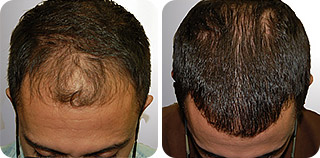 Mr. H A, Aged 28After 11 Months
Mr. H A, Aged 28After 11 MonthsI had dandruff since the beginning of the time, and unfortunately, in the past years, hair loss was added to it, and the front part of my head was out of hair. After treatment, dandruff and hair loss were wholly gone, and hair on the front part of my head started to grow again.
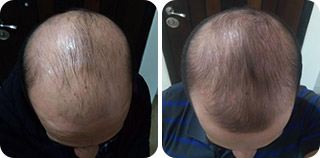 Mr. M S, Aged 35After 6 Months
Mr. M S, Aged 35After 6 MonthsAs you can see in my photo, I lost almost all my hair. After 6 months with Dr. Nasirzadeh's program, a lot of thin hair is growing on my head. I am very happy and hope that more hair will grow as I continue my treatment. Thanks to Dr. Nasirzadeh.
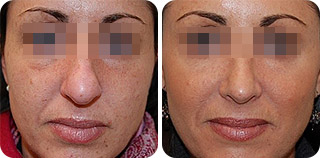 Ms. M A, Aged 42After 3 Months
Ms. M A, Aged 42After 3 MonthsWith Dr. Nasirzadeh’s recommendation, first, I did a blood test then I got my program. He advised me some supplements, creams and solutions. The spots on my face have faded, the puff under my eyes are also gone and in general, my skin is younger and brighter. I’m completely satisfied with the treatment.
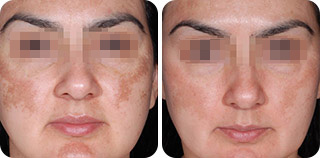 Ms. Zh K, Aged 29After 3 Months
Ms. Zh K, Aged 29After 3 MonthsThe supplements and creams that Dr. Danial recommended to me had a great effect on my skin, I’m satisfied with the result and I will complete my treatment with him for the desired result. Special thanks, doctor.
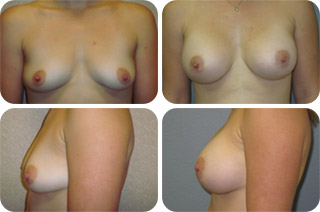 Ms. J, Aged 27After 3 Months
Ms. J, Aged 27After 3 MonthsA friend of mine introduced Dr. Nasirzadeh to me. Some blood tests were needed to begin the program, and I sent him the blood test reports. He sent me a program that included two supplements, one multivitamin and the herbal Breast Enhancement, also a moisturizer to prevent skin cracks. I was advised to take them for 3 to 4 months until my breasts reached the desired size. I am now at the end of the third month. My breasts have become bigger and are in better shape.
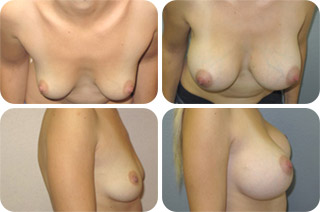 Ms. Z, Aged 25After 3 Months
Ms. Z, Aged 25After 3 MonthsDr. Nasirzadeh gave me a great program. One cream and two supplements recommended based on the results of hormonal tests. The result was what I wanted and I'm glad that I was under his treatment.
 Mr. E J, Aged 34
Mr. E J, Aged 34I had chronic sinusitis for many years, and I had to take antibiotics for that. My problem always recurred in the cold season, and it was never completely resolved until I started treatment with Dr. Nasirzadeh. My program included a number of supplements and recommendations that after a few weeks not only completely cured my sinusitis but also increased my energy level. Thank you from the bottom of my heart, Dr. Nasirzadeh
 Ms. R Y, Aged 32
Ms. R Y, Aged 32I got mild Covid-19 and isolated myself at home. I felt very tired, and my body ached, so I took an online program from Dr. Nasirzadeh to boost my immune system. After three days, I feel better, and the dizziness and other symptoms have decreased. I also took two separate programs for my parents to strengthen their immune system too.
